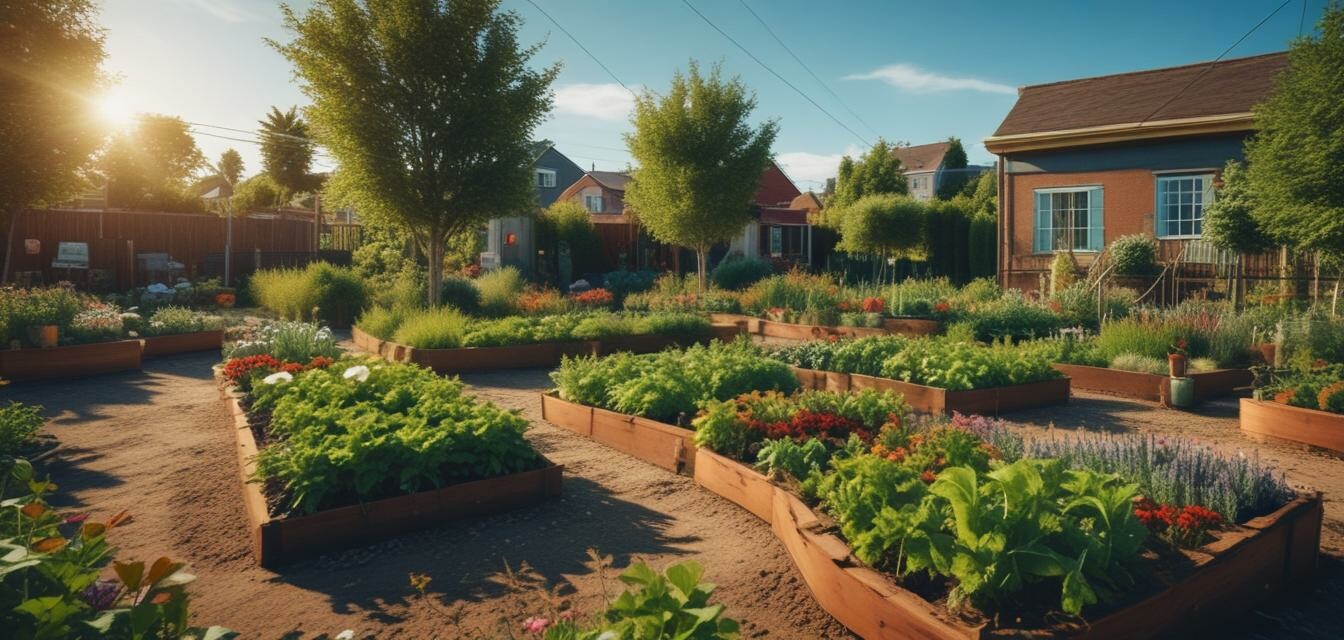
Gardening to combat climate change
Key Takeaways
- Adopting sustainable gardening practices can significantly mitigate climate change impacts.
- Implementing drought-resistant plants conserves water and enhances garden resilience.
- Composting organic waste enriches soil health and reduces landfill contributions.
- Innovative irrigation systems improve water management in gardening.
- Community gardens promote biodiversity and foster local food production.
As the effects of climate change become increasingly evident, gardeners play a crucial role in combating these challenges. By adapting practices that promote sustainability, we can not only protect the environment but also enhance the beauty and productivity of our gardens. This guide explores innovative gardening techniques and practices that can help mitigate climate change while fostering a thriving outdoor space.
Understanding climate change and gardening
Climate change refers to long-term alterations in temperature, precipitation, and other atmospheric conditions that influence ecosystems across the globe. Its impacts are evident in gardens, affecting plant growth, pest patterns, and water availability. Gardeners can combat these effects through mindful practices aimed at sustainability. Here are five key strategies:
- Utilize native plants.
- Implement composting techniques.
- Invest in innovative irrigation systems.
- Engage in community gardening.
- Incorporate sustainable pest management methods.
1. Utilize native plants
Native plants are resilient to local environmental conditions and often require less water and maintenance than non-native varieties. Integrating them into your garden can help combat climate change by:
- Providing habitat for local wildlife and pollinators.
- Enhancing soil health with deep-root systems.
- Reducing the need for chemical fertilizers and pesticides.
2. Implement composting techniques
Composting is a natural process that recycles organic waste, transforming it into valuable fertilizer. Here's why you should compost:
- Improves soil structure and moisture retention.
- Reduces the need for chemical fertilizers.
- Decreases landfill waste, minimizing your carbon footprint.
3. Invest in innovative irrigation systems
Efficient watering systems, such as drip or smart irrigation technologies, can save water and improve plant health. These systems can:
- Minimize overwatering and water wastage.
- Target water directly to plant roots.
- Adapt to weather conditions through automated systems.
4. Engage in community gardening
Community gardens not only produce fresh fruits and vegetables but also support broader environmental benefits:
- Increase local biodiversity.
- Strengthen community ties and promote education on sustainable practices.
- Enhance urban resilience to climate change.
5. Incorporate sustainable pest management methods
Reducing chemical fertilizer and pesticide use is vital for a sustainable garden. Instead, consider:
- Natural pest repellents.
- Planting pest-resistant varieties.
- Encouraging natural predators in your garden.
Innovative gardening practices for sustainability
Implementing new practices tailored to sustainability can further mitigate the effects of climate change. Here are some innovative strategies:
| Practice | Description | Benefit |
|---|---|---|
| Vertical gardening | Utilizing vertical space for plant growth. | Maximizes space in smaller gardens while reducing urban heat. |
| Permaculture | A design system emphasizing plant relationships. | Creates a self-sustaining ecosystem with minimal external input. |
| Cover cropping | Planting crops to cover soil during off-seasons. | Improves soil health and prevents erosion. |
| Hydroponics | Soil-less cultivation of plants using nutrient solutions. | Conserves water and allows for controlled growing conditions. |
| Mulching | Applying organic materials to soil surface. | Retains moisture and suppresses weeds. |
Conclusion
Incorporating sustainable practices into gardening not only addresses climate change but also enhances the joy of gardening itself. By adopting these innovative techniques, gardeners can create beautiful landscapes while understanding their crucial role in environmental stewardship. For more insights into sustainable gardening, check out our resources on buying guides, as well as information on eco-friendly fertilizers and garden tools that align with sustainable practices.
Pros
- Enhances biodiversity in gardens.
- Promotes sustainable practices among communities.
- Encourages lower water use and reduced chemical dependencies.
- Can result in healthier soil and plants.
Cons
- Initial time investment for setting up sustainable practices.
- Potential learning curve in adopting new gardening techniques.
By staying informed about the latest trends and strategies in gardening, you can ensure your approach reflects the dynamic world we live in. Join us in our News and Trends section for more updates!